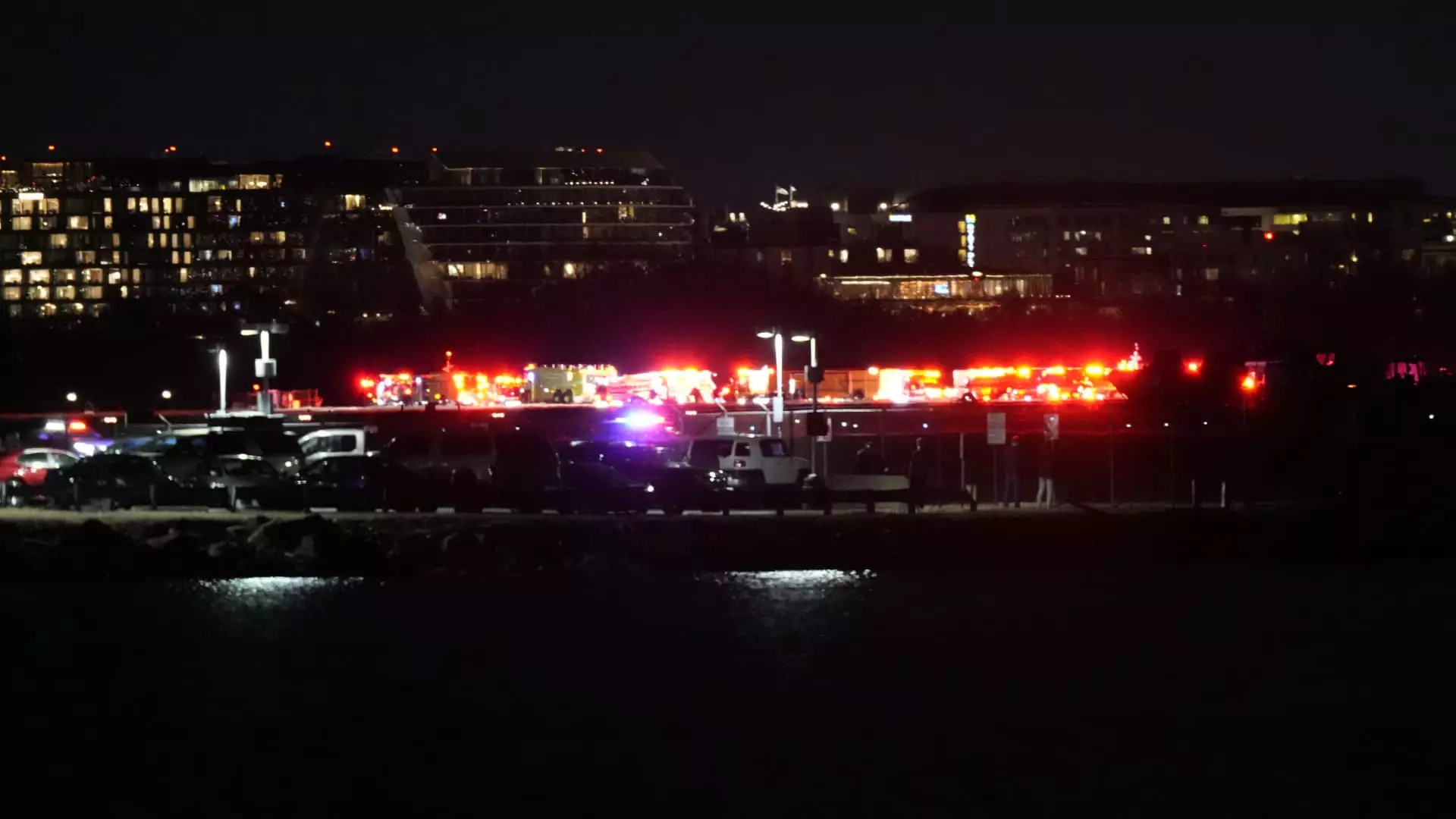On a seemingly ordinary Wednesday night, a catastrophic aviation incident unfolded just moments before landing at Reagan National Airport in Washington D.C. An American Airlines regional jet collided with a military Black Hawk helicopter, marking it as one of the most severe air disasters in the U.S. in over a decade and a half. The implications of this disaster reverberate across the aviation industry, raising alarms regarding safety protocols, the responsiveness of regulatory bodies, and the coordination between civilian and military aviation operations.
The Incident: A Moment of Confusion
According to the Federal Aviation Administration (FAA), American Eagle Flight 5342—a Bombardier CRJ700—was approaching Runway 33 at around 300 feet when the collision occurred. The regional jet, operated by PSA Airlines and en route from Wichita, Kansas, had a total of 64 individuals on board, including passengers and crew. The military aircraft involved was a Sikorsky H-60, conducting a training flight out of Fort Belvoir, Virginia. Such close interactions between civilian and military flights, particularly in a congested airspace like Washington D.C., raise significant red flags concerning the management of air traffic and operational protocols.
In the aftermath of the incident, emergency response teams faced a daunting task. With both aircraft having plunged into the icy waters of the Potomac River and under challenging weather conditions—including high winds—the rescue effort tested the mettle of the local agencies involved. Transportation Secretary Sean Duffy labeled the accident a “tragedy,” underscoring the gravity of the situation as authorities scrambled to locate victims and evaluate the extent of injuries or fatalities. Reports emerged of rescue workers recovering bodies amid the chaotic atmosphere, amplifying the urgency of deploying effective rescue measures.
In light of this disaster, various stakeholders within the aviation industry expressed their profound concern. American Airlines’ CEO Robert Isom acknowledged the gravity of the incident and indicated the company’s commitment to assisting with the emergency response. The Air Line Pilots Association also released a statement expressing shock and sadness regarding the tragedy, calling for a reevaluation of aviation safety protocols. With the FAA currently lacking a permanent administrator after the departure of Mike Whitaker, the authority is compelled to examine its oversight mechanisms. The historical context is essential here; the last major commercial airline tragedy in the U.S. prior to this incident was in 2009, leading to stringent regulations concerning pilot training and rest periods.
The collision raises critical questions about the safety of air travel, particularly when it comes to the interaction between civilian and military aviation sectors. With standards and protocols constantly evolving, the need for effective communication and airspace management cannot be overstated. The FAA and the National Transportation Safety Board’s ongoing investigation into the incident aims to identify causative factors and propose actionable solutions. Public trust in air travel will waver if systemic issues remain unaddressed.
As rescue efforts continue and investigations unfold, the focus must be on accountability and reform within the aviation industry. The catastrophe involving American Eagle Flight 5342 is not merely a tragic incident but a pivotal moment that demands transformation in safety protocols and inter-agency cooperation. The lives lost in this calamity must serve as a clarion call to not only honor their memory but also to ensure that such an accident is prevented in the future. As the nation observes the developments, the quest for justice, safety, and accountability remains paramount in order to restore faith in one of the most critical sectors of modern transportation.

